
Mummy says: We'll probably re-read this one in a couple of years, there are so many undercurrents in this book that we'll keep returning to it many times, I'm sure!
| www.writingtotheworld.com |
 Toby says: We bought this book when Nelson Mandela died, but it took us a while to read it. I didn't like how people weren't all treated the same, because that isn't right. Naledi and Tiro were very brave to go travelling all by themselves. Mummy says: We'll probably re-read this one in a couple of years, there are so many undercurrents in this book that we'll keep returning to it many times, I'm sure!
0 Comments
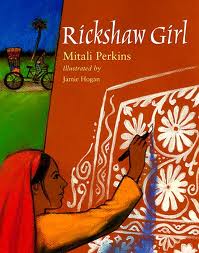 Toby says: There was a girl called Naima, she liked painting. Her Daddy worked as a rickshaw driver, and her family were very poor. Naima wanted to drive his rickshaw to help out, but she wasn't allowed, because she was a girl. But she took it out for a drive anyway and she crashed it. The rickshaw needed repairing, and the repairing person was a lady! And Naima got to paint rickshaws and work for the lady! I liked the book because Naima got to paint rickshaws and help her family. Mummy says: When Toby writes to other countries, it is often difficult to understand how some children might live there. Boys and girls might not get the same chances in life everywhere, and this was one example where we could look at this in an age-appropriate book. Naima paints alpanas, and looking at these was also a lovely introduction to art and culture.  Toby says: James' parents got eaten by a rhino, and he had to live with his not very nice aunts. He went into a peach and there were insects in the peach, they were living in the stone. They had lots of adventures, and they were really cool. They ended up in New York. I liked that the book was really adventurous. Mummy says: Toby got a whole pack of Roald Dahl books for his birthday, and this was the first one we read together. It was such fun - we were scared of the Cloudmen, talked about how many seagulls it would take to lift a house, and decided that it would be very cool to live in a peach stone house in Central Park, and have giant ladybirds and centipedes as friends. 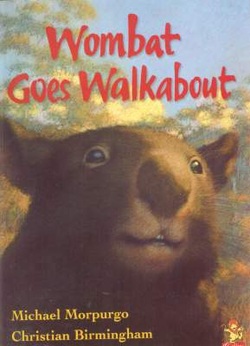 Toby says: Wombat lives in Australia. He lives underground in a deep burrow. He loses his Mummy, and he meets some animals and a little boy. They make fun of him because he only digs and thinks. Then, there was a forest fire, and he dug and dug and dug. All the animals and people he saw, they all went into his little tunnel, and they were saved. Then he told all the animals that he had lost his Mummy, and they all split up and found her. Mummy says: This was our first reading around the world book that Toby read to me (with the others, he'd read the odd page, but not the whole book). The text is just repetitive enough to not be daunting, and you meet lots of creatures from Australia - kookaburra, wallaby, koala, and emu, for example. The book was a lot bigger than we expected, it's a proper big picture book, and a lovely addition to Toby's book shelf. 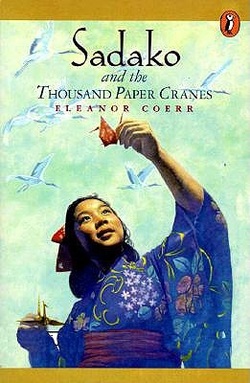 Toby says: It was really sad. Sadako was a little girl, and she had to go to the doctors. She had leukaemia from the atom bomb. She was folding a thousand paper cranes so that she could get better again, but she actually died. I liked the book, it was a sad book, though. There is a statue of Sadako in the Hiroshima Peace Memorial Park in Japan. Mummy says: This was another book that had stayed with me since childhood, and as a result of it, I have been folding paper cranes - out of receipts in restaurants, scraps of paper while we wait somewhere...Toby had been playing with these since he was tiny, and I always told him that I learnt how to fold them because of a book I'd read as a child. What I didn't realise was one important change the author made - when we researched the book, it turned out that Sadako actually managed to fold a thousand paper cranes, but died anyway. In the book, she falls short of her target, and her class mates finish the remaining cranes, so that she gets buried with a thousand paper cranes. Of course, we had to have a go at making a paper crane. With a bit of help, this is Toby's first one :) 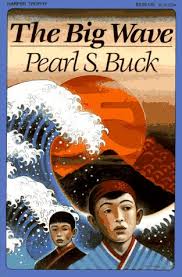 Toby says: The Big Wave was about scariness, happiness and sadness. There was a little boy called Kino and his friend Jiya. They lived on a volcano by the sea. One day, a big wave came and smashed people's houses, and people died. Jiya's Mum, Dad and brother died, so Jiya went to live in Kino's house. The boys were happy before the big wave came, but then came the big wave and they were sad. Sometimes, things are scary, but you still do them. Sometimes, even just living can be scary, but if you have friends, then you might not be so scared, but you might still be a bit scared. Mummy says: This is a beautifully written story about friendship through hardship. It explores grief and sadness, and although it is short and covers quite a bit of ground, it reads very calm and "quiet". A lovely find, and I'm sure we'll return to it.  Toby says: "I really enjoyed The Little Prince. It was all about a person who could draw boa constrictors, and he went on a plane, and he crashed in the Sahara desert. He saw a little prince there. He told him the story of how he got to planet Earth. It's about if you see an ugly person, but you know he's really nice, then in your heart you'll see a beautiful person, so what your heart sees is more important than what your eyes see. But this didn't happen in the story, but there were lots of examples about what's really important in life, like people and friends and living and love and being happy." Mummy says: "I think Toby said it all on this one :) "  Toby says: This is my best book ever...this one and Ronia. I loved it! It was an early birthday present. I liked that Paddle-to-the-Sea made it to the sea, and that the boy who made him found out about it. I really liked all the paintings and finding Paddle-to-the-Sea in the pictures. I really want to see the Niagara Falls now! Mummy says: This book was very evocative, and it touched on lots of things, some we talked about (Toby wondered why Paddle-to-the-Sea was called an "Indian", when we had been looking at "Native American" or "First People" for his letters, and we realised that our home - Sheffield - is not the only place in the world linked to steel). Because Toby is currently "writing his way" through the US and Canada, we got lots of "I wrote to X", and it was great seeing them all tied together in Paddle's journey. 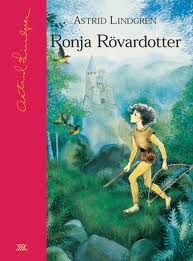 Ronia the Robber's Daughter was written by Astrid Lindgren from Sweden. Toby says: It was really good! Ronia lives in Matt's Fort, Matt is Ronia's Dad, and he is a robber chieftain. Birk Borkason is the son of Borka, and Matt and Borka are enemies. But Birk and Ronia are friends. Their Dads don't like that Ronia and Birk are friends, so Ronia and Birk secretly run away and live in a bear's cave. I liked it when Ronia and Birk made friends. I don't like that there are no more Ronia books, only one. Mummy says: Ronia the Robber's Daughter was one of my favourite books as a child, and re-reading it with Toby has reminded me why I love it so much! Ronia is such a strong girl, and really, there are no "baddies" in this book (apart from wild harpies and other creatures of the forest) - it's full of essentially "good" people who just have to see each other's point of view a bit more. |
AuthorThis blog is mainly a way to keep track of our recipes - for day to day updates, please check out Toby's Facebook page: https://www.facebook.com/writingtotheworld Archives
May 2018
Categories
All
|